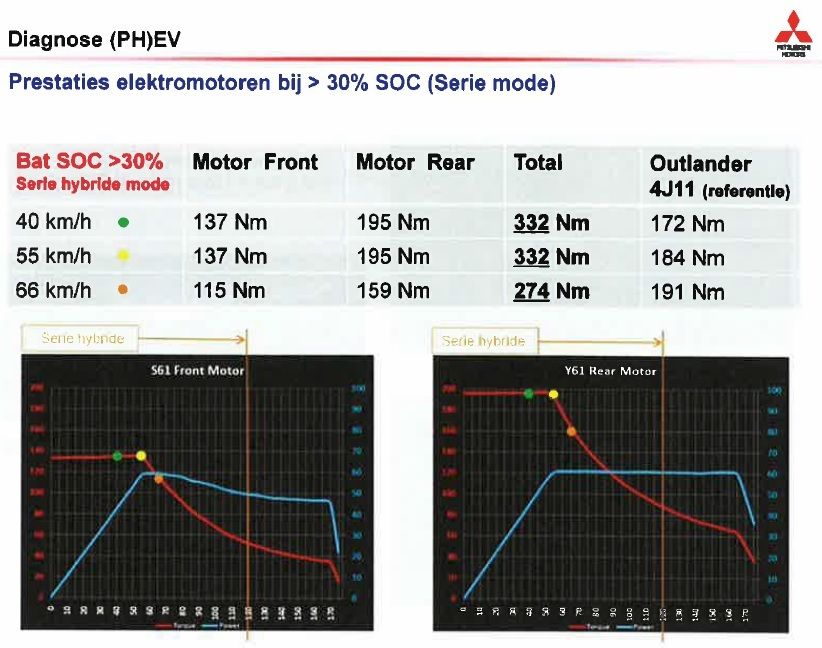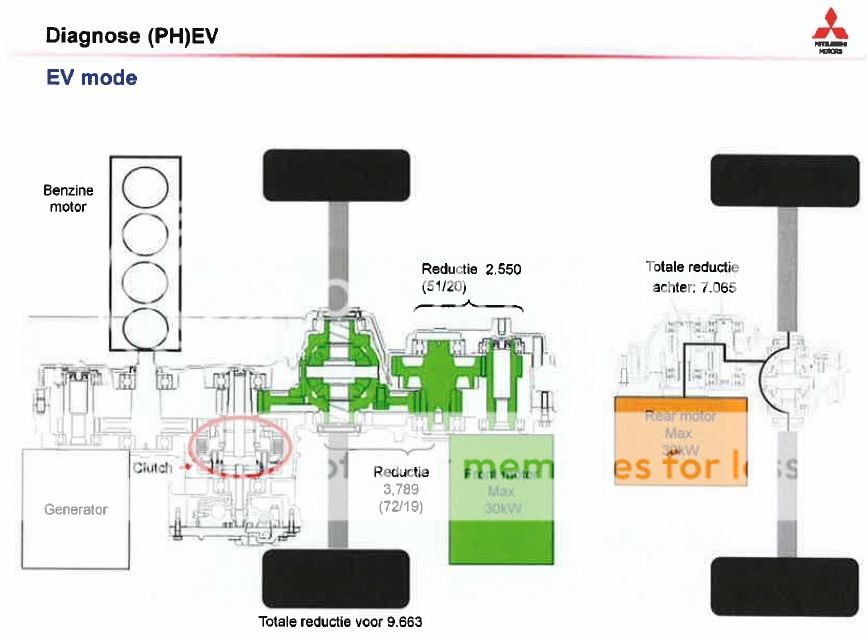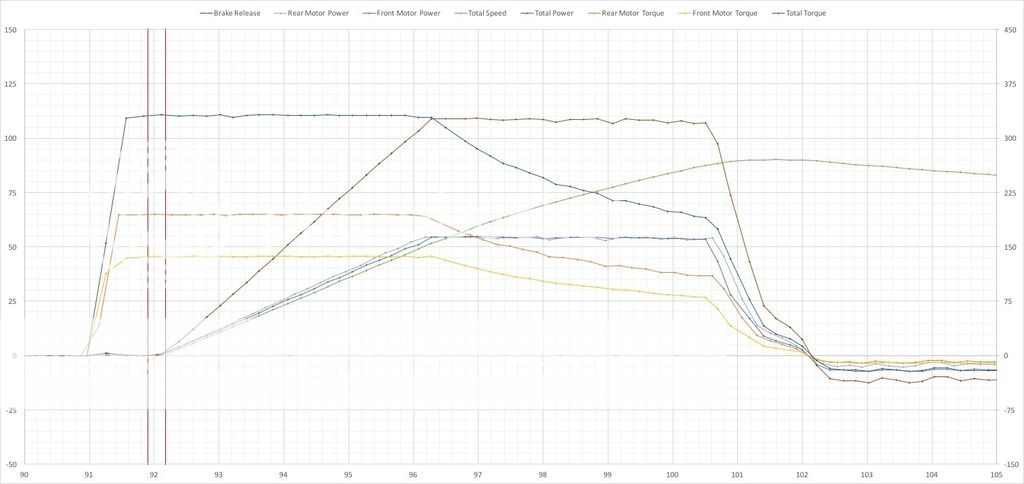Steepndeep
Well-known member
- Joined
- Apr 12, 2016
- Messages
- 139
Hi
I am with TREX to get back to the original question, "how shall you best drive the car when you want to e.g. pull a boat up a slightly slippery ramp"
I fully agree with TREX that good traction tires are a valuable but sometimes there is a really slippery patch (maybe ice) on one or more tires. How shall you then drive the car? And in order to understand this we need to understand how the car is engineered, and then test in practice.
We know this
It has 4WD with 2 motors and no diffs.
The Emotors have supposedly high torque at low RPM.
It has some software center "diff-lock" which, at least to me, is difficult to understand how it really works. Forget Mitsu advertisement here
It has anti spin which can be tuurned off
Let's take a testcase with 3 wheels on good traction and one "on ice". In my Suzuki with locked center diff I will get the car moving with NO wheelspin, well the wheel on ice spins with exactly twice the speed of the two wheels on the axel with good traction. All motor power goes to the axel with two good wheels. I also can rev the engine to max torque RPM and then use the clutch to get going.
How will this work on the PHEV?? Assuming one fronwheel on ice. And now I am guessing as I have not tested but it should be something like this. Anti spin turned OFF. 4WD lock off.
First the front wheel on ice starts spinning like crazy, even with just lightly pressing the accelerator. I then need to floor the accelerator (I guess) and then hopefully the car gets going with front wheel spinning at the speed of light But that is assuming you can get max torque at 0 RPM on rear motor. Can you really that or is there some security thinking implemented?
But that is assuming you can get max torque at 0 RPM on rear motor. Can you really that or is there some security thinking implemented?
Question
Will anti spin help front wheels to get traction? You will not loose any power trying as the front Emotor is useless anyhow in this testcase
How will 4WD lock work?
Any views? Anyone tested?
I am with TREX to get back to the original question, "how shall you best drive the car when you want to e.g. pull a boat up a slightly slippery ramp"
I fully agree with TREX that good traction tires are a valuable but sometimes there is a really slippery patch (maybe ice) on one or more tires. How shall you then drive the car? And in order to understand this we need to understand how the car is engineered, and then test in practice.
We know this
It has 4WD with 2 motors and no diffs.
The Emotors have supposedly high torque at low RPM.
It has some software center "diff-lock" which, at least to me, is difficult to understand how it really works. Forget Mitsu advertisement here
It has anti spin which can be tuurned off
Let's take a testcase with 3 wheels on good traction and one "on ice". In my Suzuki with locked center diff I will get the car moving with NO wheelspin, well the wheel on ice spins with exactly twice the speed of the two wheels on the axel with good traction. All motor power goes to the axel with two good wheels. I also can rev the engine to max torque RPM and then use the clutch to get going.
How will this work on the PHEV?? Assuming one fronwheel on ice. And now I am guessing as I have not tested but it should be something like this. Anti spin turned OFF. 4WD lock off.
First the front wheel on ice starts spinning like crazy, even with just lightly pressing the accelerator. I then need to floor the accelerator (I guess) and then hopefully the car gets going with front wheel spinning at the speed of light
Question
Will anti spin help front wheels to get traction? You will not loose any power trying as the front Emotor is useless anyhow in this testcase
How will 4WD lock work?
Any views? Anyone tested?
































